
A pilgrimage is a journey to a holy place, which can lead to a personal transformation, after which the pilgrim returns to their daily life. [1] [2] [3]

A pilgrimage is a journey to a holy place, which can lead to a personal transformation, after which the pilgrim returns to their daily life. [1] [2] [3]
Pilgrimages frequently involve a journey or search of moral or spiritual significance. Typically, it is a journey to a shrine or other location of importance to a person's beliefs and faith, although sometimes it can be a metaphorical journey into someone's own beliefs.
Many religions attach spiritual importance to particular places: the place of birth or death of founders or saints, or to the place of their "calling" or spiritual awakening, or of their connection (visual or verbal) with the divine, to locations where miracles were performed or witnessed, or locations where a deity is said to live or be "housed", or any site that is seen to have special spiritual powers. Such sites may be commemorated with shrines or temples that devotees are encouraged to visit for their own spiritual benefit: to be healed or have questions answered or to achieve some other spiritual benefit.
A person who makes such a journey is called a pilgrim. As a common human experience, pilgrimage has been proposed as a Jungian archetype by Wallace Clift and Jean Dalby Clift. [4] Some research has shown that people who engage in pilgrimage walks enjoy biological, psychological, social, and spiritual therapeutic benefits. [5]
The Holy Land acts as a focal point for the pilgrimages of the Abrahamic religions of Judaism, Christianity, and Islam. According to a Stockholm University study in 2011, these pilgrims visit the Holy Land to touch and see physical manifestations of their faith, confirm their beliefs in the holy context with collective excitation, and connect personally to the Holy Land. [6]
The Catholic priest Frank Fahey writes that a pilgrim is "always in danger of becoming a tourist" and vice versa, and identifies eight differences between the two: [7]
| Element | Pilgrimage | Tourism |
|---|---|---|
| Faith | always contains "faith expectancy" | not required |
| Penance | search for wholeness | not required |
| Community | often solitary, but should be open to all | often with friends and family, or a chosen interest group |
| Sacred space | silence to create an internal sacred space | not present |
| Ritual | externalizes the change within | not present |
| Votive offering | leaving behind a part of oneself, letting go, in search of a better life | not present; the travel is the good life |
| Celebration | "victory over self", celebrating to remember | drinking to forget |
| Perseverance | commitment; "pilgrimage is never over" | holidays soon end |
The Eleusinian mysteries included a pilgrimage. The procession to Eleusis began at the Athenian cemetery Kerameikos and from there the participants walked to Eleusis, along the Sacred Way (Ἱερὰ Ὁδός, Hierá Hodós). [8]
Bahá'u'lláh decreed pilgrimage to two places in the Kitáb-i-Aqdas: the House of Bahá'u'lláh in Baghdad, Iraq, and the House of the Báb in Shiraz, Iran. Later, ʻAbdu'l-Bahá designated the Shrine of Bahá'u'lláh at Bahji, Israel as a site of pilgrimage. [9] The designated sites for pilgrimage are currently not accessible to the majority of Bahá'ís, as they are in Iraq and Iran respectively, and thus when Bahá'ís currently refer to pilgrimage, it refers to a nine-day pilgrimage which consists of visiting the holy places at the Bahá'í World Centre in northwest Israel in Haifa, Acre, and Bahjí. [9]


In India and Nepal, there are four places of pilgrimage which are tied to the life of Gautama Buddha:
Other pilgrimage places in India and Nepal connected Gautama Buddha's life are: Savatthi, Pataliputta, Nalanda, Gaya, Vesali, Sankasia, Kapilavastu, Kosambi, Rajagaha.
Other famous places for Buddhist pilgrimage include:


Christian pilgrimage was first made to sites connected with the birth, life, crucifixion and resurrection of Jesus. Aside from the early example of Origen in the third century, surviving descriptions of Christian pilgrimages to the Holy Land date from the 4th century, when pilgrimage was encouraged by church fathers including Saint Jerome, and established by Saint Helena, the mother of Constantine the Great. [10]
The purpose of Christian pilgrimage was summarized by Pope Benedict XVI in this way:
To go on pilgrimage is not simply to visit a place to admire its treasures of nature, art or history. To go on pilgrimage really means to step out of ourselves in order to encounter God where he has revealed himself, where his grace has shone with particular splendour and produced rich fruits of conversion and holiness among those who believe. Above all, Christians go on pilgrimage to the Holy Land, to the places associated with the Lord's passion, death and resurrection. They go to Rome, the city of the martyrdom of Peter and Paul, and also to Compostela, which, associated with the memory of Saint James, has welcomed pilgrims from throughout the world who desire to strengthen their spirit with the Apostle's witness of faith and love. [11]
Pilgrimages were, and are, also made to Rome and other sites associated with the apostles, saints and Christian martyrs, as well as to places where there have been apparitions of the Virgin Mary. A popular pilgrimage journey is along the Way of St. James to the Santiago de Compostela Cathedral, in Galicia, Spain, where the shrine of the apostle James is located. A combined pilgrimage was held every seven years in the three nearby towns of Maastricht, Aachen and Kornelimünster where many important relics could be seen (see: Pilgrimage of the Relics, Maastricht). Chaucer's The Canterbury Tales recounts tales told by Christian pilgrims on their way to Canterbury Cathedral and the shrine of Thomas Becket. Marian pilgrimages remain very popular in Latin America.
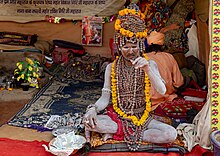
According to Karel Werner's Popular Dictionary of Hinduism, "most Hindu places of pilgrimage are associated with legendary events from the lives of various gods.... Almost any place can become a focus for pilgrimage, but in most cases they are sacred cities, rivers, lakes, and mountains." [12] Hindus are encouraged to undertake pilgrimages during their lifetime, though this practice is not considered absolutely mandatory. Most Hindus visit sites within their region or locale.

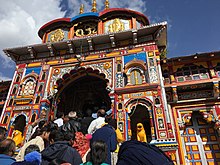

The Ḥajj (Arabic : حَـجّ, main pilgrimage to Mecca) is one of the five pillars of Islam and a mandatory religious duty for Muslims that must be carried out at least once in their lifetime by all adult Muslims who are physically and financially capable of undertaking the journey, and can support their family during their absence. [17] [18] [19] The Hajj is one of the largest annual gatherings of people in the world. [20] [21] Since 2014, two or three million people have participated in the Hajj annually. [22] The mosques in Mecca and Medina were closed in February 2020 because of the COVID-19 pandemic and the hajj was permitted for only a very limited number of Saudi nationals and foreigners living in Saudi Arabia starting on 29 July. [23]
Another important place for Muslims is the city of Medina, the second holiest site in Islam, in Saudi Arabia, the final resting place of Muhammad in Al-Masjid an-Nabawi (The Mosque of the Prophet). [24]
The Ihram (white robe of pilgrimage) is meant to show equality of all Muslim pilgrims in the eyes of Allah. 'A white has no superiority over a black, nor a black over a white. Nor does an Arab have superiority over a non-Arab, nor a non-Arab over an Arab - except through piety' - statement of the Prophet Muhammad.
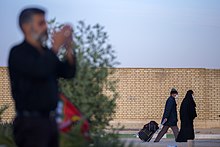
About four million pilgrims participate in the Grand Magal of Touba, 200 kilometres (120 mi) east of Dakar, Senegal. The pilgrimage celebrates the life and teachings of Cheikh Amadou Bamba, who founded the Mouride brotherhood in 1883 and begins on the 18th of Safar. [25]
Al-Arba‘īn (Arabic : ٱلْأَرْبَـعِـيْـن, "The Forty"), Chehelom (Persian : چهلم, Urdu : چہلم, "the fortieth [day]") or Qirkhī, Imāmīn Qirkhī (Azerbaijani : İmamın qırxı (Arabic : إمامین قیرخی), "the fortieth of Imam") is a Shia Muslim religious observance that occurs forty days after the Day of Ashura. It commemorates the martyrdom of Husayn ibn Ali, the grandson of Muhammad, which falls on the 20th or 21st day of the month of Safar. Imam Husayn ibn Ali and 72 companions were killed by Yazid I's army in the Battle of Karbala in 61 AH (680 CE). Arba'een or forty days is also the usual length of mourning after the death of a family member or loved one in many Muslim traditions. Arba'een is one of the largest pilgrimage gatherings on Earth, in which up to 31 million people go to the city of Karbala in Iraq. [26] [27] [28] [29]
The second largest holy city in the world, Mashhad, Iran, attracts more than 20 million tourists and pilgrims every year, many of whom come to pay homage to Imam Reza (the eighth Shi'ite Imam). It has been a magnet for travelers since medieval times. [30] [22]
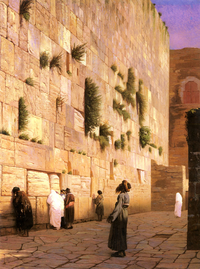
While Solomon's Temple stood, Jerusalem was the centre of the Jewish religious life and the site of the Three Pilgrimage Festivals of Passover, Shavuot and Sukkot, and all adult men who were able were required to visit and offer sacrifices ( korbanot ) at the Temple. After the destruction of the Temple, the obligation to visit Jerusalem and to make sacrifices no longer applied. The obligation was restored with the rebuilding of the Temple, but following its destruction in 70 CE, the obligation to make a pilgrimage to Jerusalem and offer sacrifices again went into abeyance. [31]
The western retaining wall of the Temple Mount, known as the Western Wall or "Wailing" Wall, is the remaining part of Second Jewish Temple in the Old City of Jerusalem is the most sacred and visited site for Jews. Pilgrimage to this area was off-limits to Jews from 1948 to 1967, when East Jerusalem was under Jordanian control. [32] [33]
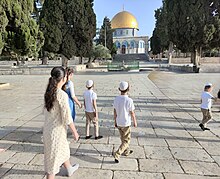
There are numerous lesser Jewish pilgrimage destinations, mainly tombs of tzadikim , throughout Israel and Palestine and all over the world, including: Hebron; Bethlehem; Mount Meron; Netivot; Uman, Ukraine; Silistra, Bulgaria; Damanhur, Egypt; and many others. [34]
Many rabbis claim that even today, after the destruction of the Temple, there is a mitzvah to make a pilgrimage on holidays. [35]

Sikhism does not consider pilgrimage as an act of spiritual merit. Guru Nanak went to places of pilgrimage to reclaim the fallen people, who had turned ritualists. He told them of the need to visit that temple of God, deep in the inner being of themselves. According to him: "He performs a pilgrimage who controls the five vices." [36] [37]
Eventually, however, Amritsar and Harmandir Sahib (the Golden Temple) became the spiritual and cultural centre of the Sikh faith, and if a Sikh goes on pilgrimage it is usually to this place. [38]
The Panj Takht (Punjabi: ਪੰਜ ਤਖ਼ਤ) are the five revered gurdwaras in India that are considered the thrones or seats of authority of Sikhism and are traditionally considered a pilgrimage. [39]
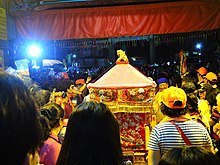
Mazu, also spelled as Matsu, is the most famous sea goddess in the Chinese southeastern sea area, Hong Kong, Macau and Taiwan.
Mazu Pilgrimage is more likely as an event (or temple fair), pilgrims are called as "Xiang Deng Jiao" ( pinyin: xiāng dēng jiǎo, it means "lantern feet" in Chinese), they would follow the Goddess's (Mazu) palanquin from her own temple to another Mazu temple. By tradition, when the village Mazu palanquin passes, the residents would offer free water and food to those pilgrims along the way.
There are 2 main Mazu pilgrimages in Taiwan, it usually hold between lunar January and April, depends on Mazu's will.

In Iran, there are pilgrimage destinations called pirs in several provinces, although the most familiar ones are in the province of Yazd. [42] In addition to the traditional Yazdi shrines, new sites may be in the process of becoming pilgrimage destinations. The ruins are the ruins of ancient fire temples. One such site is the ruin of the Sassanian era Azargoshnasp fire temple in Iran's Azarbaijan Province. Other sites are the ruins of fire temples at Rey, south of the capital Tehran, and the Firouzabad ruins sixty kilometres south of Shiraz in the province of Pars.
Atash Behram ("Fire of victory") is the highest grade of fire temple in Zoroastrianism. It has 16 different "kinds of fire", that is, fires gathered from 16 different sources. [43] Currently there are 9 Atash Behram, one in Yazd, Iran and the rest in Western India. They have become a pilgrimage destination. [44]
In India the cathedral fire temple that houses the Iranshah Atash Behram, located in the small town of Udvada in the west coast province of Gujarat, is a pilgrimage destination. [44]
The main pilgrimage sites associated with the spiritual teacher Meher Baba are Meherabad, India, where Baba completed the "major portion" [45] of his work and where his tomb is now located, and Meherazad, India, where Baba resided later in his life.

Mecca is the capital of Mecca Province in the Hejaz region of western Saudi Arabia and the holiest city in Islam. It is 70 km (43 mi) inland from Jeddah on the Red Sea, in a narrow valley 277 m (909 ft) above sea level. Its last recorded population was 2,385,509 in 2022. Its metropolitan population in 2022 is 2.4 million, making it the third-most populated city in Saudi Arabia after Riyadh and Jeddah. Around 44.5% of the population are Saudi citizens and around 55.5% are foreigners from other Muslim countries. Pilgrims more than triple the population number every year during the Ḥajj pilgrimage, observed in the twelfth Hijri month of Dhūl-Ḥijjah. With over 10.8 million international visitors in 2023, Mecca was one of the 10 most visited cities in the world.

A pilgrim is a traveler who is on a journey to a holy place. Typically, this is a physical journey to some place of special significance to the adherent of a particular religious belief system. In the spiritual literature of Christianity, the concept of pilgrim and pilgrimage may refer to the experience of life in the world or to the inner path of the spiritual aspirant from a state of wretchedness to a state of beatitude.

Karbala or Kerbala is a city in central Iraq, located about 100 km (62 mi) southwest of Baghdad, and a few miles east of Lake Milh, also known as Razzaza Lake. Karbala is the capital of Karbala Governorate, and has an estimated population of 711,530 people (2018).

A shrine is a sacred space dedicated to a specific deity, ancestor, hero, martyr, saint, daemon, or similar figure of respect, wherein they are venerated or worshipped. Shrines often contain idols, relics, or other such objects associated with the figure being venerated. A shrine at which votive offerings are made is called an altar.
ziyara(h) (Arabic: زِيَارَة ziyārah, "visit") or ziyarat (Persian: زیارت, ziyārat, "pilgrimage"; Turkish: ziyaret, "visit") is a form of pilgrimage to sites associated with the Islamic prophet Muhammad, his family members and descendants (including the Shī'ī Imāms), his companions and other venerated figures in Islam such as the prophets, Sufi auliya, and Islamic scholars. Sites of pilgrimage include mosques, maqams, battlefields, mountains, and caves.

Parikrama or Pradakshina is clockwise circumambulation of sacred entities, and the path along which this is performed, as practiced in the Indic religions – Hinduism, Buddhism, Sikhism and Jainism. In Buddhism, it refers only to the path along which this is performed. Typically, in Indic-religions the parikrama is done after completion of traditional worship and after paying homage to the deity. Parikrama must be done with dhyāna.

The holiest sites in Islam are predominantly located in the Arabian Peninsula and the Levant. While the significance of most places typically varies depending on the Islamic sect, there is a consensus across all mainstream branches of the religion that affirms three cities as having the highest degree of holiness, in descending order: Mecca, Medina, and Jerusalem. Mecca's Al-Masjid al-Haram, Al-Masjid an-Nabawi in Medina and Al-Masjid al-Aqsa in Jerusalem are all revered by Muslims as sites of great importance.
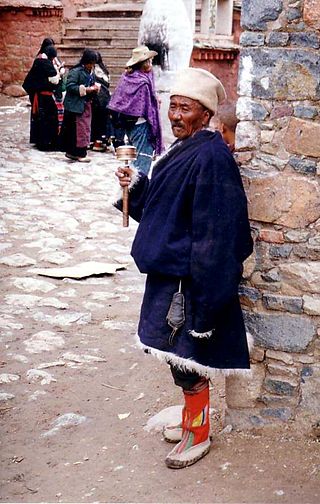
The most important places in Buddhism are located in the Indo-Gangetic Plain of southern Nepal and northern India. This is the area where Gautama Buddha was born, lived, and taught, and the main sites connected to his life are now important places of pilgrimage for both Buddhists and Hindus. Many countries that are or were predominantly Buddhist have shrines and places which can be visited as a pilgrimage.

The Day of Arafah is an Islamic holiday that falls on the 9th day of Dhu al-Hijjah of the lunar Islamic Calendar. It is the second day of the Hajj pilgrimage and is followed by the holiday of Eid al-Adha. At dawn of this day, Muslim pilgrims will make their way from Mina to a nearby hillside and plain called Mount Arafat and the Plain of Arafat. It was from this site that the Islamic prophet Muhammad gave one of his last sermons in the final year of his life. Some Muslims hold that part of the Quranic verse announcing that the religion of Islam had been perfected was revealed on this day.

Religious tourism, spiritual tourism, sacred tourism, or faith tourism, is a type of tourism with two main subtypes: pilgrimage, meaning travel for religious or spiritual purposes, and the viewing of religious monuments and artefacts, a branch of sightseeing.

Yatra, in Indian-origin religions, Hinduism, Buddhism, Jainism and Sikhism, generally means a pilgrimage to holy places such as confluences of sacred rivers, sacred mountains, places associated with Hindu epics such as the Mahabharata and Ramayana, and other sacred pilgrimage sites. Visiting a sacred place is believed by the pilgrim to purify the self and bring one closer to the divine. The journey itself is as important as the destination, and the hardships of travel serve as an act of devotion in themselves.

Both Sunni Muslims and Shia Muslims agree on the three holiest sites in Islam being, respectively, the Masjid al-Haram, in Mecca; the Al-Masjid an-Nabawi, in Medina; and the Al-Masjid al-Aqsa, in Jerusalem.

Hajj is an annual Islamic pilgrimage to Mecca, Saudi Arabia, the holiest city for Muslims. Hajj is a mandatory religious duty for Muslims that must be carried out at least once in their lifetime by all adult Muslims who are physically and financially capable of undertaking the journey, and of supporting their family during their absence from home.
In religion and spirituality, a pilgrimage is a very long journey or search of great moral significance. Sometimes, it is a journey to a sacred area or shrine of importance to innate faith. Members of every major religion participate in pilgrimages. A person who makes such a journey is called a pilgrim.

The hajj is a pilgrimage to Mecca performed by millions of Muslims every year, coming from all over the Muslim world. Its history goes back many centuries. The present pattern of the Islamic Hajj was established by Islamic prophet Muhammad, around 632 CE, who reformed the existing pilgrimage tradition of the pagan Arabs. According to Islamic tradition, the hajj dates from thousands of years earlier, from when Abraham, upon God's command, built the Kaaba. This cubic building is considered the most holy site in Islam and the rituals of the hajj include walking repeatedly around it.
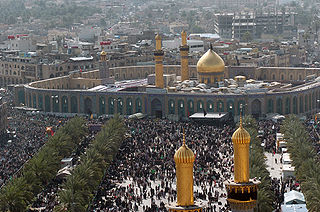
The Arba'in pilgrimage is the world's largest annual public gathering. It is a pilgrimage to the shrine of Husayn ibn Ali, grandson of the Islamic prophet Muhammad and the third Shia imam. Every year, on the twentieth of Safar, also known as Arba'in, millions of pilgrims flock to Karbala, Iraq, often arriving there on foot from the nearby city of Najaf. Arba'in marks forty days after the tenth of Muharram, known as Ashura. On this day in 61 AH, Husayn was killed, alongside most of his relatives and his small retinue, in the Battle of Karbala against the army of the Umayyad caliph Yazid ibn Mu'awiya. The battle followed Husayn's refusal to pledge his allegiance to Yazid, who is often portrayed by Muslim historians as impious and immoral. In Shia Islam, Karbala symbolizes the eternal struggle between good and evil, the pinnacle of self-sacrifice, and the ultimate sabotage of Muhammad's prophetic mission.
Religious tourism in India is a focus of Narendra Modi's national tourism policy. Uttarakhand has been popular as a religious and adventure tourism hub.

The Khalili Collection of the Hajj and the Arts of Pilgrimage is a private collection of around 5,000 items relating to the Hajj, the pilgrimage to the holy city of Mecca which is a religious duty in Islam. It is one of eight collections assembled, conserved, published and exhibited by the British-Iranian scholar, collector and philanthropist Nasser Khalili; each collection is considered among the most important in its field. The collection's 300 textiles include embroidered curtains from the Kaaba, the Station of Abraham, the Mosque of the Prophet Muhammad and other holy sites, as well as textiles that would have formed part of pilgrimage caravans from Egypt or Syria. It also has illuminated manuscripts depicting the practice and folklore of the Hajj as well as photographs, art pieces, and commemorative objects relating to the Hajj and the holy sites of Mecca and Medina.

Hajj: Journey to the Heart of Islam was an exhibition held at the British Museum in London from 26 January to 15 April 2012. It was the world's first major exhibition telling the story, visually and textually, of the hajj – the pilgrimage to Mecca which is one of the five pillars of Islam. Textiles, manuscripts, historical documents, photographs, and art works from many different countries and eras were displayed to illustrate the themes of travel to Mecca, hajj rituals, and the Kaaba. More than two hundred objects were included, drawn from forty public and private collections in a total of fourteen countries. The largest contributor was David Khalili's family trust, which lent many objects that would later be part of the Khalili Collection of Hajj and the Arts of Pilgrimage.
{{cite book}}: CS1 maint: others (link){{cite book}}: CS1 maint: location missing publisher (link) CS1 maint: multiple names: authors list (link) CS1 maint: numeric names: authors list (link){{cite web}}: CS1 maint: others (link)